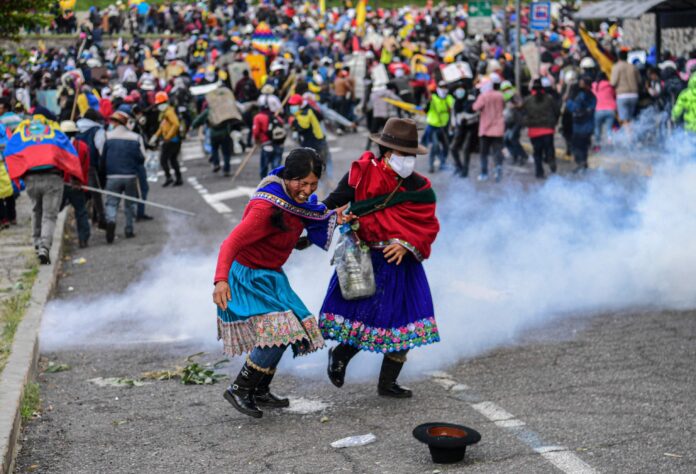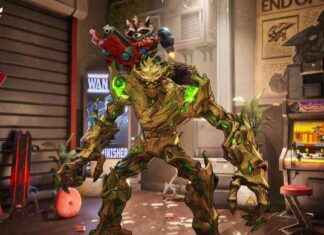“We are in the front row until the end, defending…”. The roar of a tear gas canister suddenly cuts off the calm speech of Efraín Mariño, a farmer from Chimborazo, a volcano over 6,000 meters high, the closest point on Earth to the Sun. In the midst of the serious crisis affecting Ecuador, The place where Mariño tried to talk to the reporter, after taking a picture of two boys who are also fighting in the front row of the protests, is the closest to the Police.
We are a few meters from the El Arbolito park, close to the Casa de la Cultura, indigenous territory during the takings of Quito, of which there have already been quite a few. In the midst of the state of emergency decreed by President Guillermo Lasso, law enforcement harasses protesters from early in the morning so that they cannot concentrate and advance again, whether against the National Assembly, the Prosecutor’s Office or the Comptroller’s Office , attacked in the previous days. In this area of downtown Quito, the taste of gas, burnt trunk and eucalyptus, an ancestral remedy, is chewed, which the indigenous people use to mitigate suffocation.
It is the scene of the Ecuadorian battle, although, not far from there, the opposite is also being fought. On Thursday night, thousands of people from Quito took to the streets to demand that Lasso put an end to the “chaos and disorder” that reigns in the capital. They are the two faces of the national strike, the challenge of Leonardo Iza, a radical leader of the indigenous people, against the presidency, with former president Rafael Correa moving in the shadows of power, even though he remains a fugitive from justice in Belgium.
Mariño has reluctantly left Chimborazo, “where I live with the vaquitas, taking care of the land. I support my five children with milk, but they only pay me 25 cents a liter. And food prices have gone up so much that a plate of food used to cost $2.50 and now it’s double.”
In the first row of the protests, the majority are young people with shields and faces covered as best they can, although there are also older indigenous people, as well as some young girls. “We want Lasso to leave and for a better president to come in who does good and government for all. I will be in the front row and if I have to die, I will die. God has a plan for each of my children,” he says. Marine.
The landscape between battles is blackened by bonfires. “Ecuador, homeland or chaos”, shoots a graffiti a few meters from the House of Culture. Civil organizations supply food and also street vendors offer small plates with pork leg and rice “very cheap, at 1.25 and 1.50”. The police deployment is carried out with small motorized battalions, which chase the demonstrators. So far there are three people killed in the framework of the national strike, although the government accounts for a fourth.
“They treat us like vandals, but I have joined the indigenous people because they protect me. Lasso only listens to the IMF and forgets about the people,” claims a 31-year-old artist, who earns his living on buses and who wants to be known as “Anonymous”. The young man protects himself with a shield that he himself has painted, “the Lord of Justice, which comes from the Flemish Baroque and shows a beaten Christ. The indigenous people who fight with me feel protected with him.”
Beyond the fighting territory, a city holds its breath. The latest demonstration of the self-convened has brought together thousands of people from Quito who want to go back to work and for the chaos to end. “The situation in Quito today is terrible, a victim of violence. Many people cannot work, I am telecommuting, but in my company the losses are multiplying, some of our vehicles have even been attacked,” denounces Ricardo Yela, who joins to the march with his partner, both armed with Ecuadorian flags, which, along with the white ones, are the great stars of the protest. Also on the other side.
“Terrorist Conaie”, reads another graffiti on the border of the two territories. A good part of the people of Quito have placed Iza and Correa at the center of their criticism, but they do not save the conservative president either. “We have been protesting for twelve days and the government does not seem to have any plan,” concludes Sonia Peña, a claim that seems to be that of almost everyone in both territories of the capital.
Conforms to The Trust Project criteria








